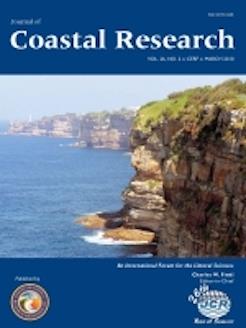Coastal Cliffs Representing The Hawkesbury Sandstone Belt
The coastal cliffs along the Bondi Coast in Sydney, Australia, form part of the Hawkesbury Sandstone belt. Hawkesbury Sandstone, which dates back to the Triassic Age (approximately 199-251 million years ago), is prevalent throughout the Sydney region of New South Wales, Australia, and named for the Hawkesbury River, where this sedimentary rock is commonly found. Renowned for its high resistance to weathering, Hawkesbury Sandstone has been credited with the preservation of many ancient Aboriginal rock drawings and carvings. Overall, the Hawkesbury Sandstone is considered the caprock which inhibits erosion and scarp retreat of the Illawarra Escarpment.
Even though Hawkesbury Sandstone is highly resistant to weathering, it does exhibit an unique form of decomposition called alveolar, or honeycomb, weathering. Also known as fretting, cavernous weathering, stone lattice, stone lace, or miniature tafoni weathering, this type of salt weathering common on coastal and semi-arid granites, sandstones, and limestones, is caused when salt crystals pry apart the mineral grains (Mustoe, 1982). In the JCR cover photograph, note the differential weathering patterns of the cliffs, as alternate massive and cross bedded layers of Hawkesbury Sandstone rise above a wave cut platform at the base.
(Photograph by Dr. P.T. Hanamgond, Department of Geology, G.S. Science College, Tilakwadi, Belgaum, India)
Reference: Mustoe, G.E., 1982. The Origin of Honeycomb Weathering. Geology Society of America Bulletin, 93, 108-115.






